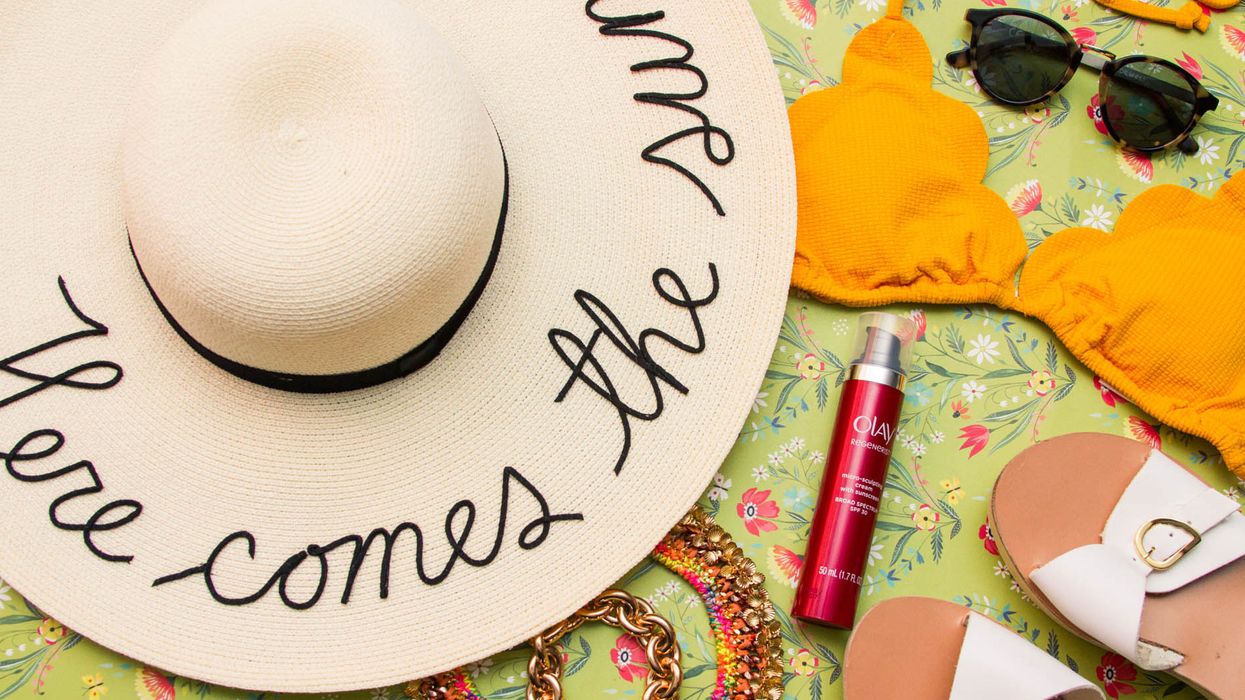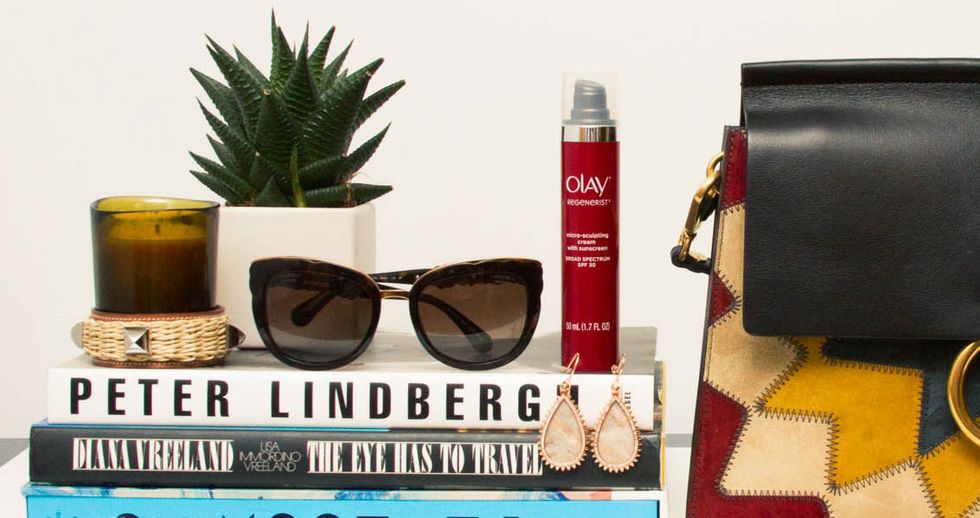Here’s How the Sun is Secretly Aging Your Skin (!)
Gulp. A friendly reminder to not to skip the SPF.

Be honest: how many days of the year do you wake up and coat your skin in SPF? Half the time? One third? Three days? Let’s assume it’s not often enough. Because the sun’s rays are sneaky little skin damaging monsters that seriously affect the health of your skin, yes, even when it's hidden behind grey, fluffy, rain-and-snow-producing clouds. It may not be instant, and it may come in a form of a really flattering tan, but it’s happening. If you’re not already a devotee, believe us when we say you’ll one day wish you took the time to work SPF into your daily beauty routine. To learn more, we dialed up Dr. Frauke Neuser, Principal Scientist at Olay, for a refresher (and to answer some clarifying Qs) on what level sunscreen is truly best to use on the daily, how we’re being exposed and (probably) don’t even know it, and the ways we can make it a habit that sticks. Your skin will thank you for reading this.
What You Don’t Know
“We’ve known for a while that UV radiation and UV damage is the number one cause of premature skin aging. That’s a big concern because of aging, but it’s also a huge health concern because it can cause skin cancer. We’ve been educating people about this for so many years with [the advice of] dermatologists, but the number of people that use SPF daily is under 50%. People know about it, but for some reason they don’t think it applies to them. They think, ‘If I go to the beach or sit in the backyard, I'll wear it, but not on a daily basis.’ That’s the big misconception; that you only need sun protection when you’re sitting in the sun.”
Daylight = Exposure
“You’re exposed all the time, even when it’s winter. If there’s daylight, even if you don’t see the sun, the UV radiation penetrates the clouds, which means you always need to protect yourself. That doesn’t mean you need 50 SPF from head to toe, but you should be protecting the areas that are exposed and using at least an SPF 15 and dermatologists recommend going with an SPF 30 every day.”
The Coverage You Need Daily
“SPF 15 and 30 work on a daily basis for the vast majority of people. The level you choose is dependent on the fairness of your skin and the activities you’re engaging in your daily life. If you’re outside a lot, you probably want at least SPF 30. If you’re only outside between [being indoors], then an SPF 15 will do the job most of the time.”
The True Meaning of Those SPF #s
“What people often get confused about is what SPF 15 and 30 actually mean. The number refers to the amount of time you can stay in the sun before getting burnt. For my skin type, SPF 15 usually means I can be in the sun for ten minutes before getting sunburnt, while with the SPF 50, I can stay in the sun for 50 minutes. Those numbers are somewhat confusing and often people think that an SPF 30 is twice as good as an SPF 15. Not really. An SPF 30 protects you from 97%, and an SPF 50 protects you 98% (a difference of only 1%)—the curve becomes flatter and flatter.”
The Damage Before The Burn
“As you know from experience of sitting out in the sun, it takes a while for the sunburn to develop. At that point, the UV radiation has already gotten into your skin and can cause small amounts of damage. A sunburn is visible redness and doesn’t mean that you’re not getting UV damage to your skin before that visible burn. If you think about your life, 365 days a year for 70+ years, you’re exposed to consistent low-level damage.”

Types of Damage
“UV radiation creates free radicals on your skin and those free radicals are very damaging little molecules. They react with proteins in your skin and halogens, the liquids in your skin and break them down. They react with the DNA inside—a lot of molecular-level damage. You’re not going to see it the next day or the week after, but it adds up. The skin is able to repair some of that damage, but there’s a tipping point for your skin. That is when it starts to become visible in terms of skin-aging.”
There’s No Such Thing as a Healthy Tan
“There is something invisible going on [when you’re exposed to sun]. A tan means your skin is already damaged—your skin’s response to protecting you from the UV rays is to produce more melanin. That doesn’t mean that if you have a little bit of a tan once a year, it’s the end of the world. It’s something to always be conscious of.”
Don’t Miss These Parts
“Cover the areas that are exposed [all the time] like your decolletage, your neck, and your hands. You forget that you wash [your hands] so many times a day and that you don’t re-apply, so be conscious of that.”
Be Careful When...
“Using Retin-A. It’s a great example [of products that might make you more photosensitive]. Anything that's highly exfoliating, like a microdermabrasion or an exfoliation that you can do at home, makes your skin more vulnerable to UV exposure. Do this in the evening so that your skin can recover. In the morning use SPF protection."
Make it a Habit
“If you use a moisturizer in the morning (I’m assuming most of you do), make it a lightweight moisturizer that already has SPF built in but doesn't feel too greasy or heavy like Olay Regenerist Micro-Sculpting Cream with Sunscreen Broad Spectrum SPF 30. Don’t make it just your summer moisturizer, use it all year.
Makeup Doesn’t Count
“A lot of women use makeup with SPF, like as a powder or a foundation—that’s great, it definitely doesn’t hurt—but don’t rely on it as your only sun protection. You would need quite a lot of that product to add up to the SPF level it says on the packaging.”
Top: Hat, Eugenia Kim;Swimsuit, Marysia, both via Net-A-Porter; Bracelet, Eddie Borgo; Necklace, Venessa Arizaga; Shoes, Ancient Greek Sandals




